After securing their third straight Carabao Cup on Sunday, Manchester City continued to fight for another title: the FA Cup. In the fifth round, they travelled to the Hillsborough and challenged Sheffield Wednesday, 12th in the EFL Championship. Pep Guardiola played his strongest available squad in this game, dominated the match and secured the victory thanks to Sergio Agüero’s goal.
In this tactical analysis, we will show you how Manchester City beat Sheffield Wednesday. It is an analysis that focuses on the two teams’ tactics.
Lineups
Garry Monk shifted his formation from a back four to a 5-3-2. City academy product Kieren Westwood was injured as Joe Wildsmith started his first game of the season. Their top goalscorer, Steven Fletcher was kept on the bench; Joey Pelupessy and Domonic Iorfa were given the chances to start too.
For City, they played in a 4-3-3 formation. Several players returned to the squad, including Gabriel Jesus, Bernardo Silva, Benjamin Mendy, Nicolás Otamendi and Riyad Mahrez and João Cancelo. Kevin De Bruyne was absent due to a shoulder problem, and Leroy Sané is still looking to regain fitness. Guardiola will be hoping that both players can return soon for the final stretch in the Premier League and Champions League.
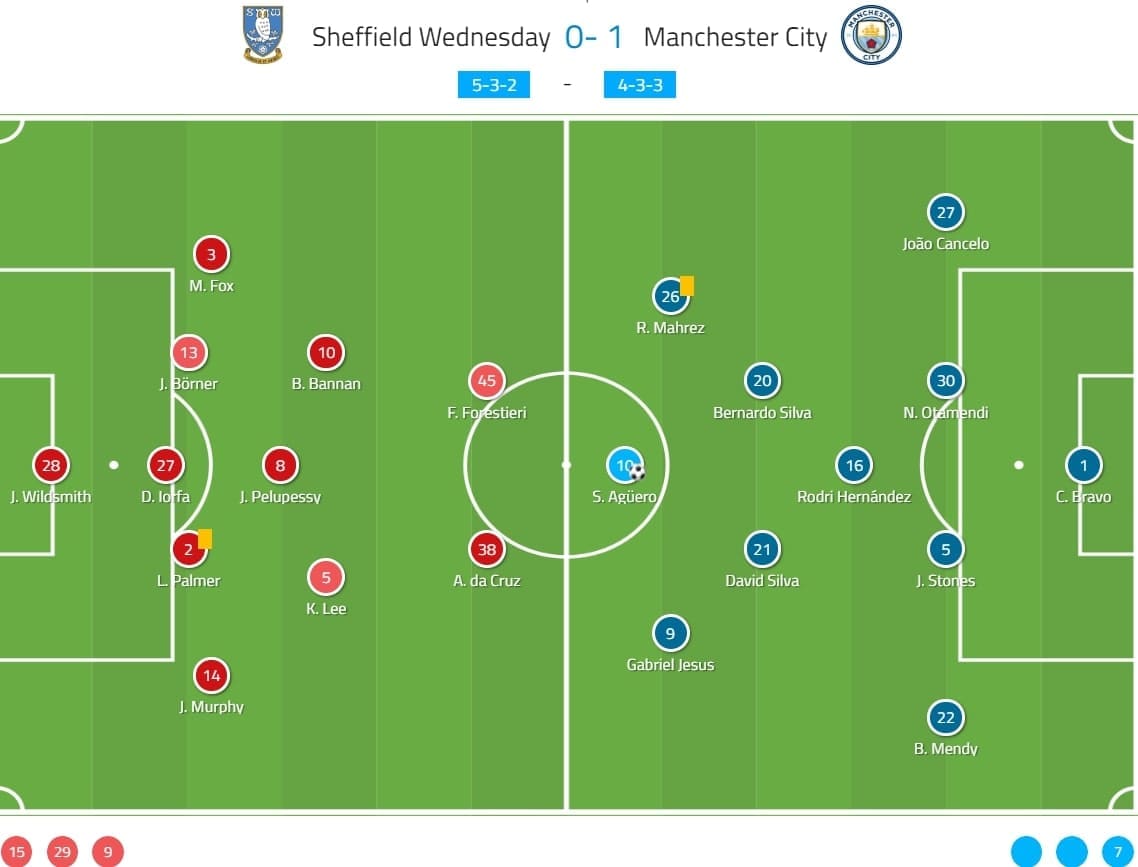
Sheffield Wednesday’s midblock
To begin with, we explain how Monk set up his team to defend against City. Although playing at home, Wednesday defended with a zonal midblock instead of pressing high. The defending players could be roughly divided into two groups. For the back five, they stayed at the back line and defend deep with both wing-backs instructed to step out early to approach the wide players. For the other five, they defended in a 3-2 ‘pentagon’ shape. It was a zonal system, basically, the players stepped out to approach the City players in the corresponding vertical zones.
As illustrated above, on most occasions, the left midfielder (Barry Bannan) pressed Cancelo while the strikers (Fernando Forestieri and Alessio da Cruz), took turns to press the corresponding centre-back. Staying compact was not a priority for the block, as, when a wide midfielder or striker(s) stepped out, the rest did not follow up.
It was the job of the centre-backs to mark the dropping players tightly, even they had to leave their positions. This was a benefit of playing with a back five, though one of the defenders was out of position, they still had four at the back
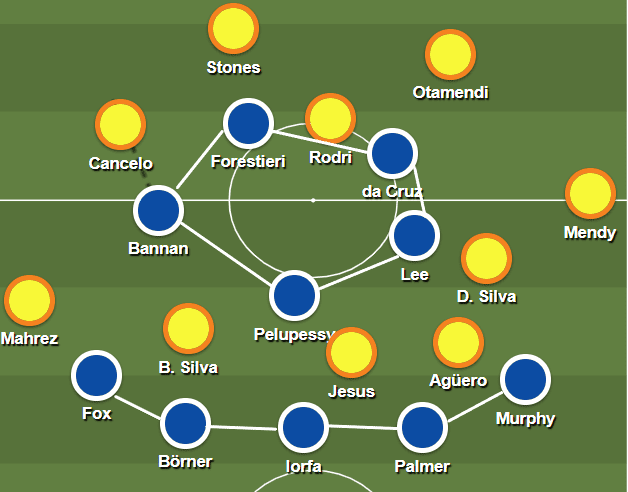
Below is a game example. As outlined, the block of Wednesday consisted of two parts. For the ‘pentagon’, it was positioned in the central part of the pitch, created a pressing trap. They left the central area opened, lured City to penetrate into the block, then, compressed spaces or intercepted passes.
Or, if City did not fall into the trap, they would spread the ball wide given the crowded central areas. At least, Wednesday kept the ball away from the goal.
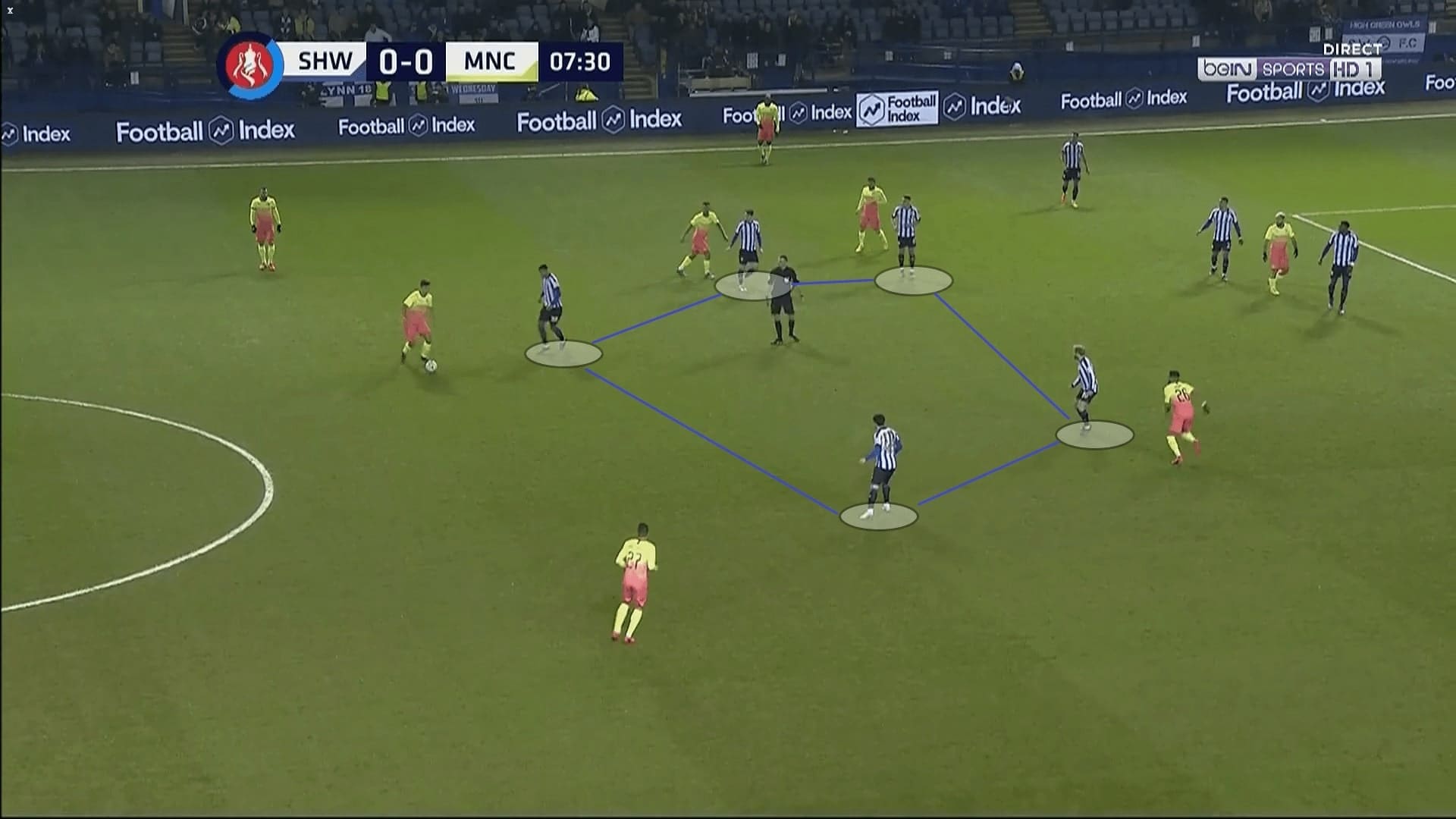
Inverted right-back: Cancelo
As for City, they played in their own style, though the details were different according to the context of the game. In this match, Cancelo played as the inverted right-back. It was not a fixed position as sometimes B. Silva or Mahrez would rotate with him. For the first phase of City’s attack, they enjoyed absolute numerical superiority by committing four to five players in it.
As shown in this image, Cancelo stayed in the half-spaces, forming a quadrilateral with Otamendi, John Stones, and Rodrigo Hernández. As explained in the previous section, Wednesday’s block did not emphasize compactness. It was commonly seen that the strikers were isolated when defending. In this case, City enjoyed a 4-v-2 numerical advantage. City were comfortable to move the ball freely in the first phase of the attack, they had 772 passes in this game (90%).
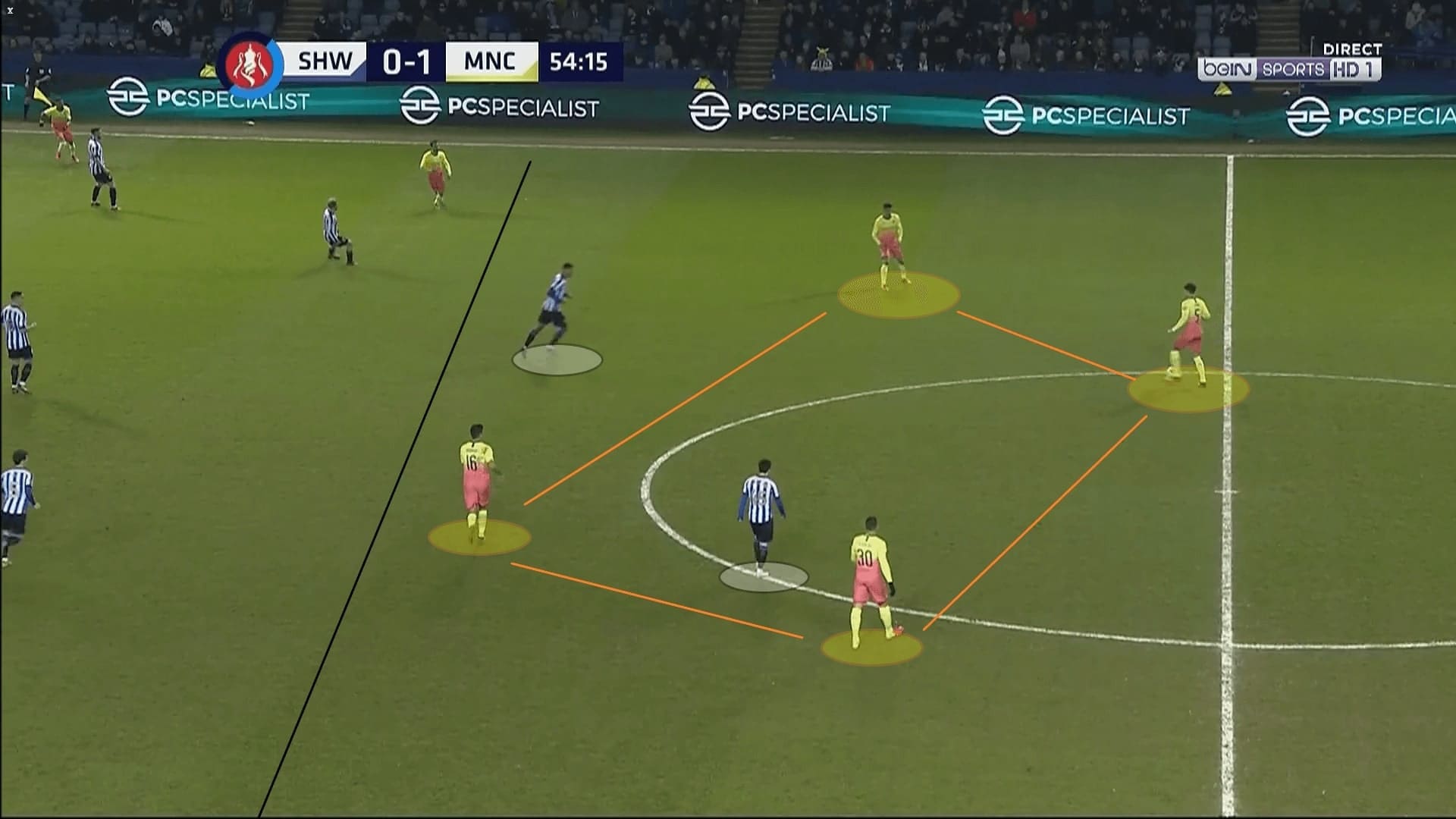
However, this approach had a disadvantage when progressing the attack. Since Mahrez and B. Silva were both left-footed players, body orientation was an issue. When Cancelo passed diagonally to find the wide players, they were forced to receive the ball in closed body shape. This mostly happened when the wing-backs were behind the receiver. In those cases, Mahrez or B. Silva could not turn, they could merely return the ball.
This scenario was an example. Wednesday pressed in a triangle shape and forced Cancelo to find Mahrez. The press was carried out simultaneously, so, when the Algerian received the ball, the left wing-back (Morgan Fox) was behind him. Meanwhile, Julian Börner was approaching B. Silva. Under instant pressure, Mahrez chose a safe option, Cancelo.
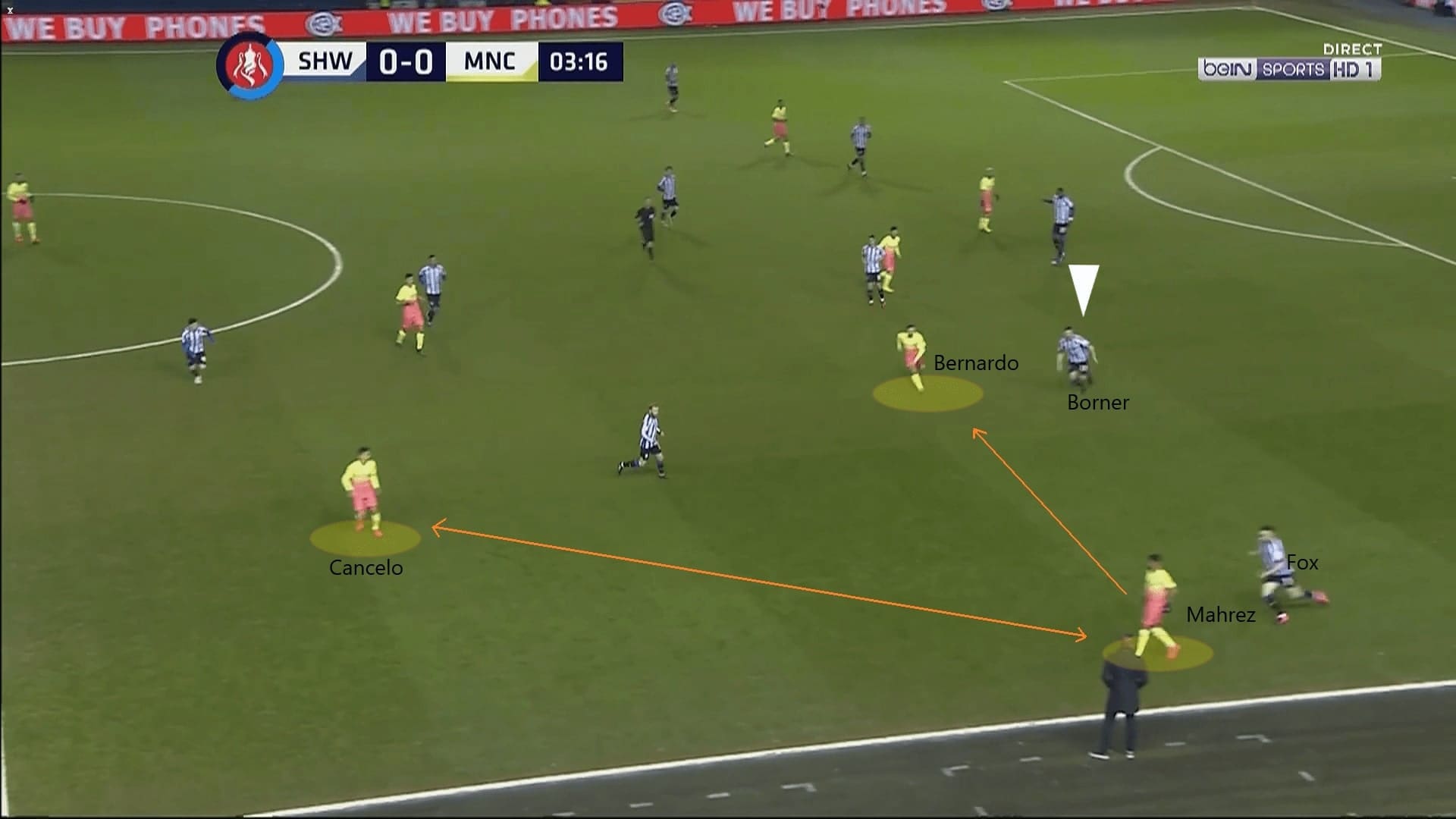
After the break, Cancelo was encouraged to pass vertically instead of merely repeating the diagonal passes in the first half. These were conducive to the attack as City kept the ball in the centre. Although the receiver still had his back to goal, he had other options on both sides to perform a third-man play.
In this example, Cancelo passed vertically to find Agüero, who dropped to receive the ball. Since the Argentine stayed in the half-spaces, he had room to play the ball to David Silva. This eventually resulted in Mendy’s effort which hit the woodwork.
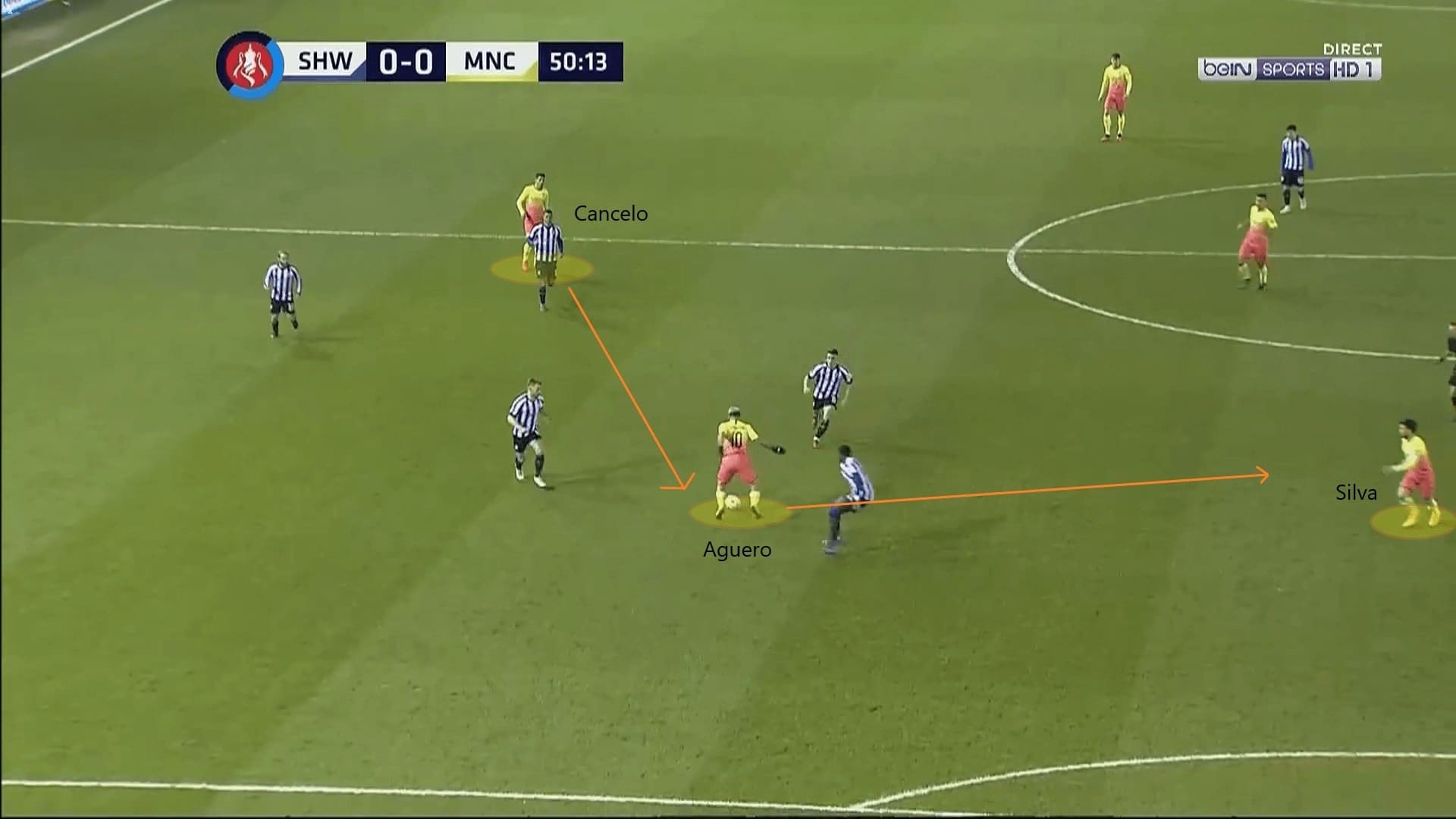
Mendy provided the attacking threat
On the other side, Mendy played as a wide full-back. The Frenchman produced a phenomenal display to help City attack smoothly. He had impressive statistics in this game, including seven crosses (29%); two dribbles (100%); 10 recoveries; four defensive duels (75%); four interceptions; two key passes and a shot assist.
In this section, we want to point out the offensive threat provided by Mendy. First, we break down his passes. The World Cup winner made 84 passes and completed 70 (83%). Although the success rate was the lowest among the defenders, but the quality of his passes were vital.
Below is Mendy’s passing graph. Only 13 passes from his 84 were backward passes; 45 were lateral passes and 12 of them were forward passes. The Frenchman had the ability to provide quality passes to the centre, which helped City to progress the attack. It was shown in the passing directions below, in the opposition half.
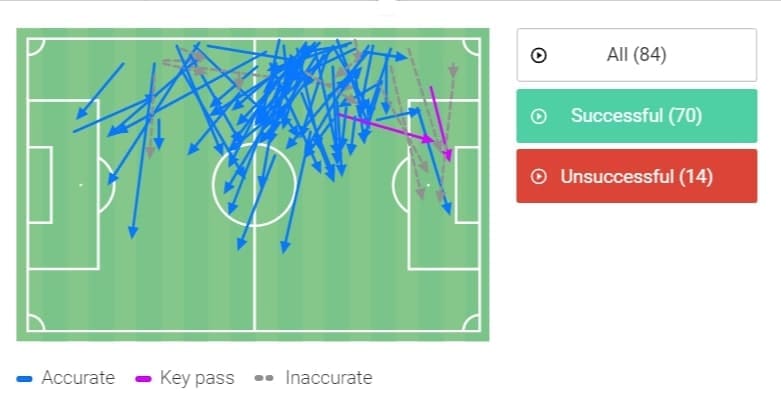
This was an example of Mendy demonstrating his reading of the game and he could consistently deliver the ball to the centre. In this case, he noticed Agüero’s presence. Most of the deliveries were curled passes, this allowed the passing route went beside the nearest defenders and reaching the target in a safer manner.
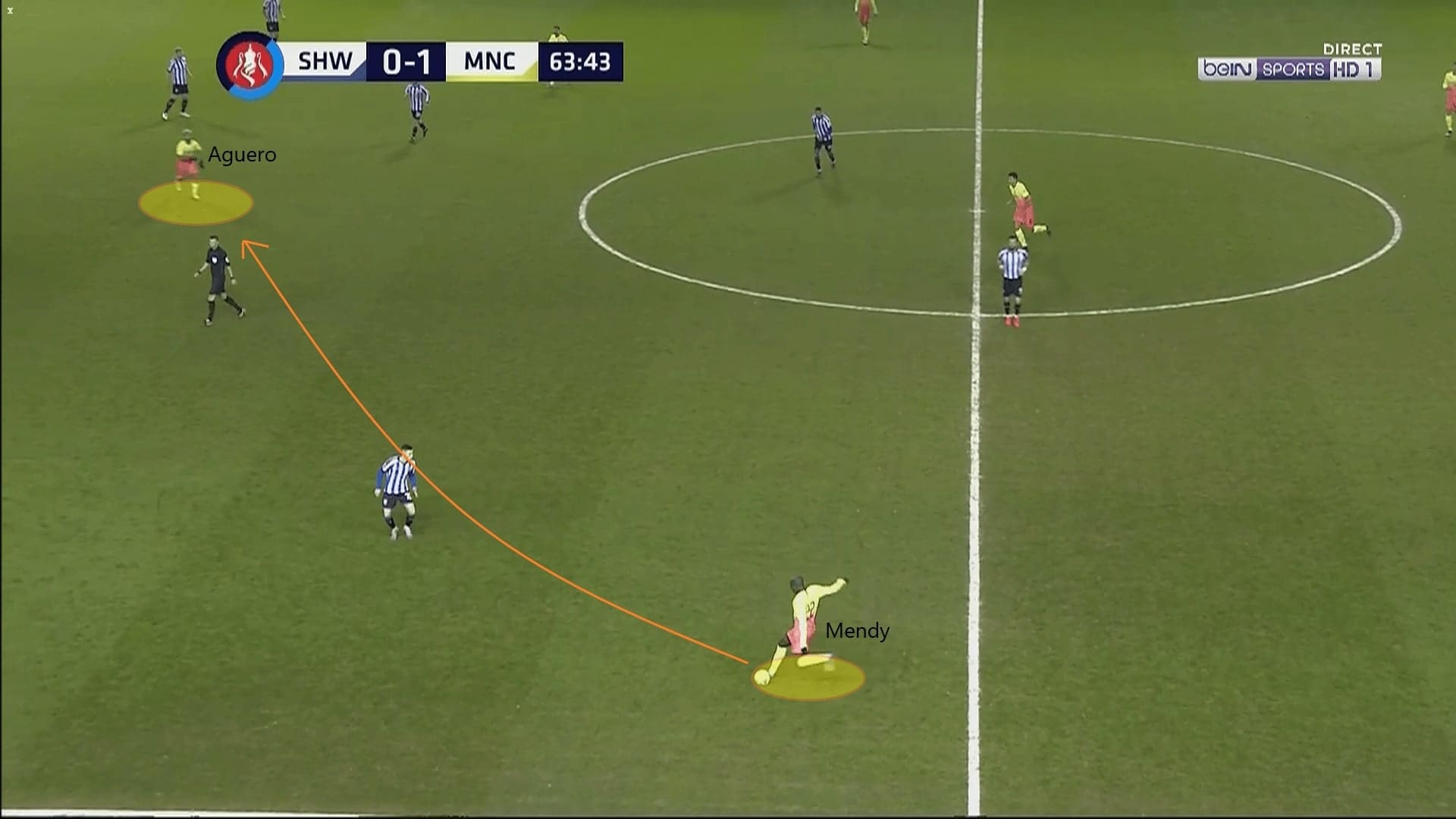
As mentioned, Mendy provided tremendous support on the left flank. In this game, Jesus was the left-winger. The Brazilian tended to move to the centre and leave the wide channel for the left-back. It was Mendy’s job to exploit those areas and provide crosses.
In this example, you can see Jesus positioned himself centrally. Therefore, Mendy stayed in the wide channel, with Otamendi releasing the Frenchman to cross.
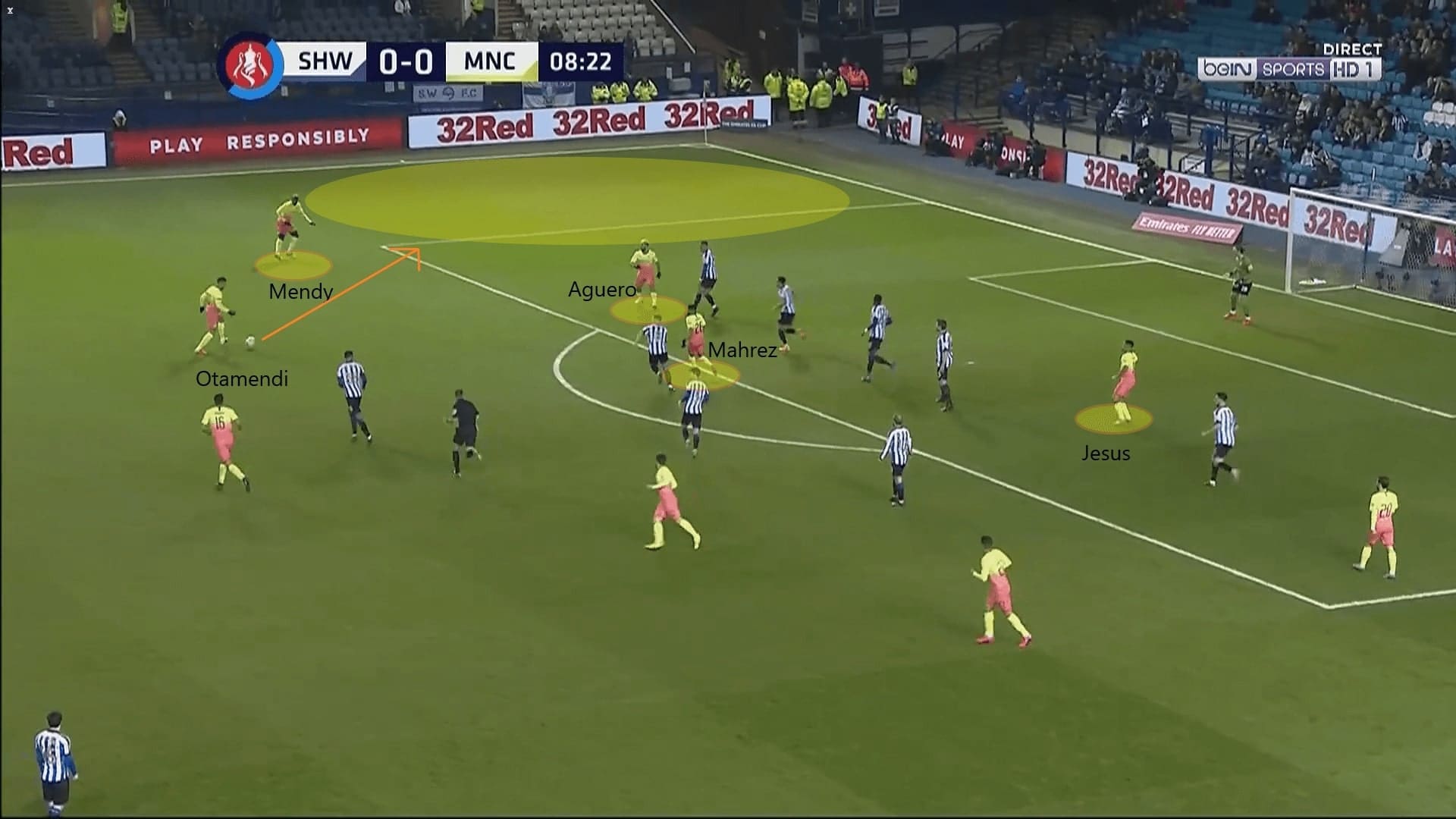
Stretching the defence
In the attacking third, City tried to stretch the back five of Wednesday and create horizontal gaps between defenders. They allowed the attacking players to roam from their positions, and, through the movements, they drew the defenders away.
This image briefly demonstrated the idea of this approach. On occasion, D. Silva and B. Silva moved to the wide areas. Intriguingly, both of them were the advanced midfielders, so these were outward movements. The key is these movements, they constantly took the defenders away, isolating the centre-backs.
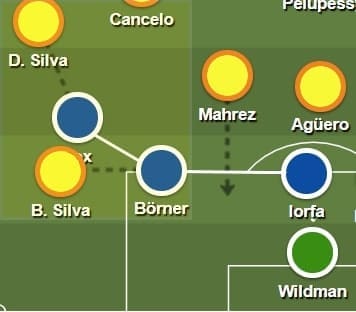
We have some examples to demonstrate this type of attack. In this case, D. Silva stayed in zone 18 and B. Silva made an outward movement away from the box. They took the left centre-back and left wing-back away from the defenders, thus, generated the highlighted gap at the half-spaces.
In such cases, Mahrez was pleased to make forward runs to receive diagonal passes from D. Silva.
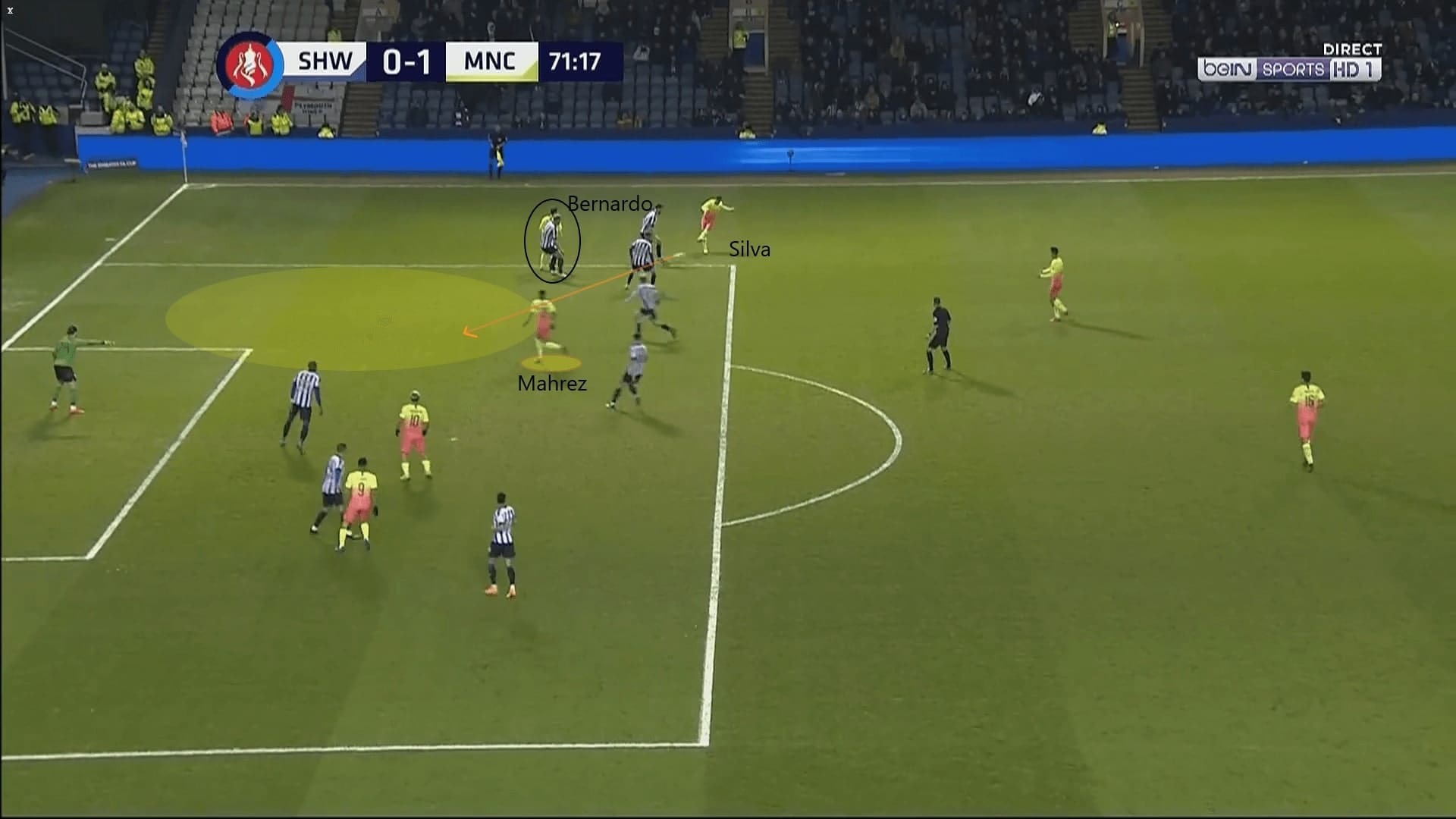
This idea also created the only goal of the match. It happened at the other flank. This time, it was Mendy who took the right wing-back away. As you can see, Jacob Murphy was approaching the Frenchman. Jesus made an outward run and Liam Palmer followed him tightly. These created the pocket of space between Iorfa and Palmer.
Again, Mendy’s passing ability and the decision should be credited. In this case, passing to Jesus was easier, but he attempted a slightly trickier one and had a huge reward.
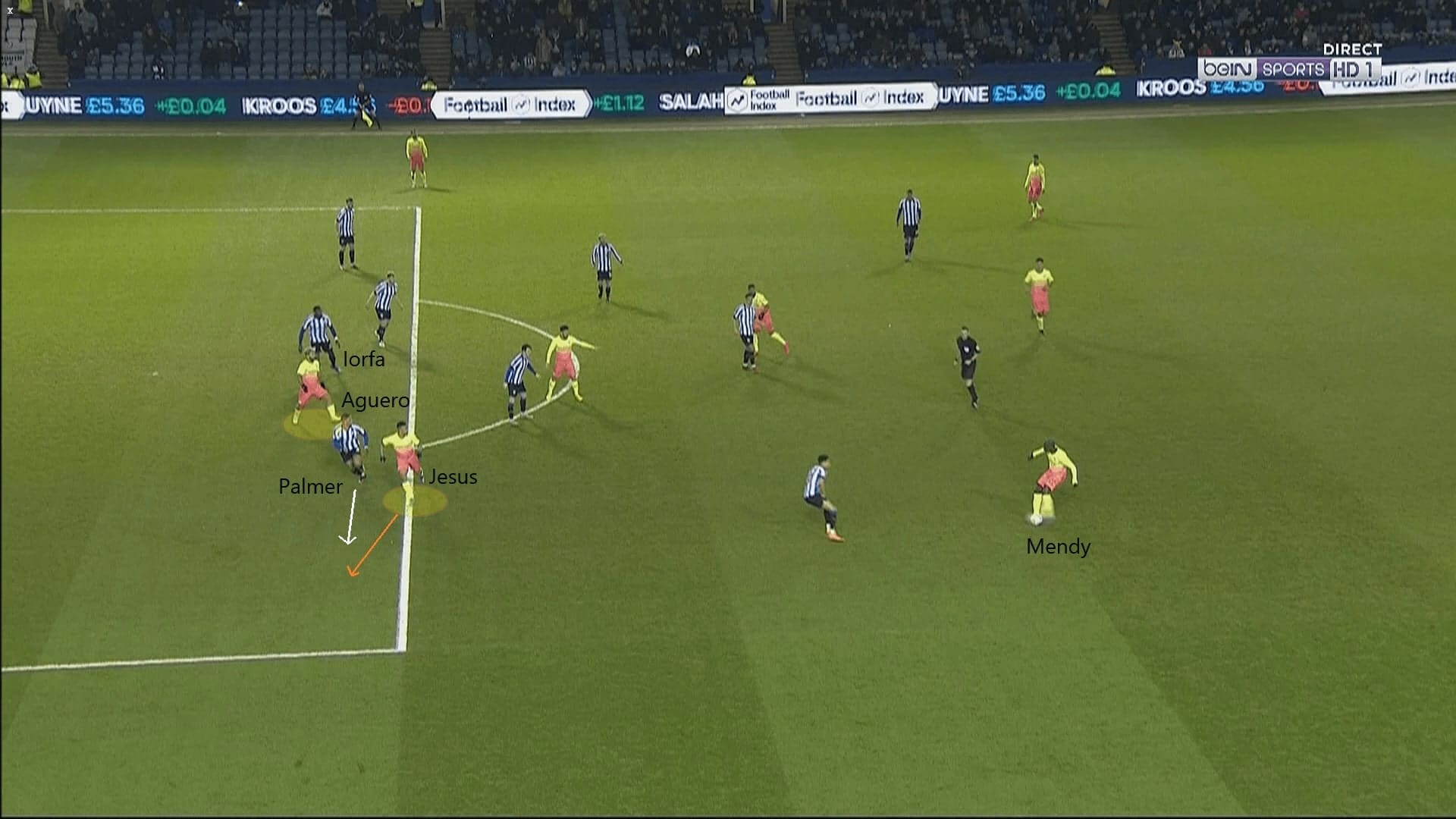
To further elaborate on the stretching of defence, we also used Jesus as an example. This was not the first time for the Brazilian to start as a left-winger, he was very comfortable to run in the half-spaces or attack in the box. Again, City capitalized on the horizontal gaps between Wednesday defenders.
As you can see in this image, Mendy’s positioning triggered Murphy to push higher. City progressed through the dropping Agüero, but this time Wednesday could not stop the clever pass which reached B. Silva. This triggered Iorfa’s press, and Jesus timed his run behind Palmer and between the defenders.
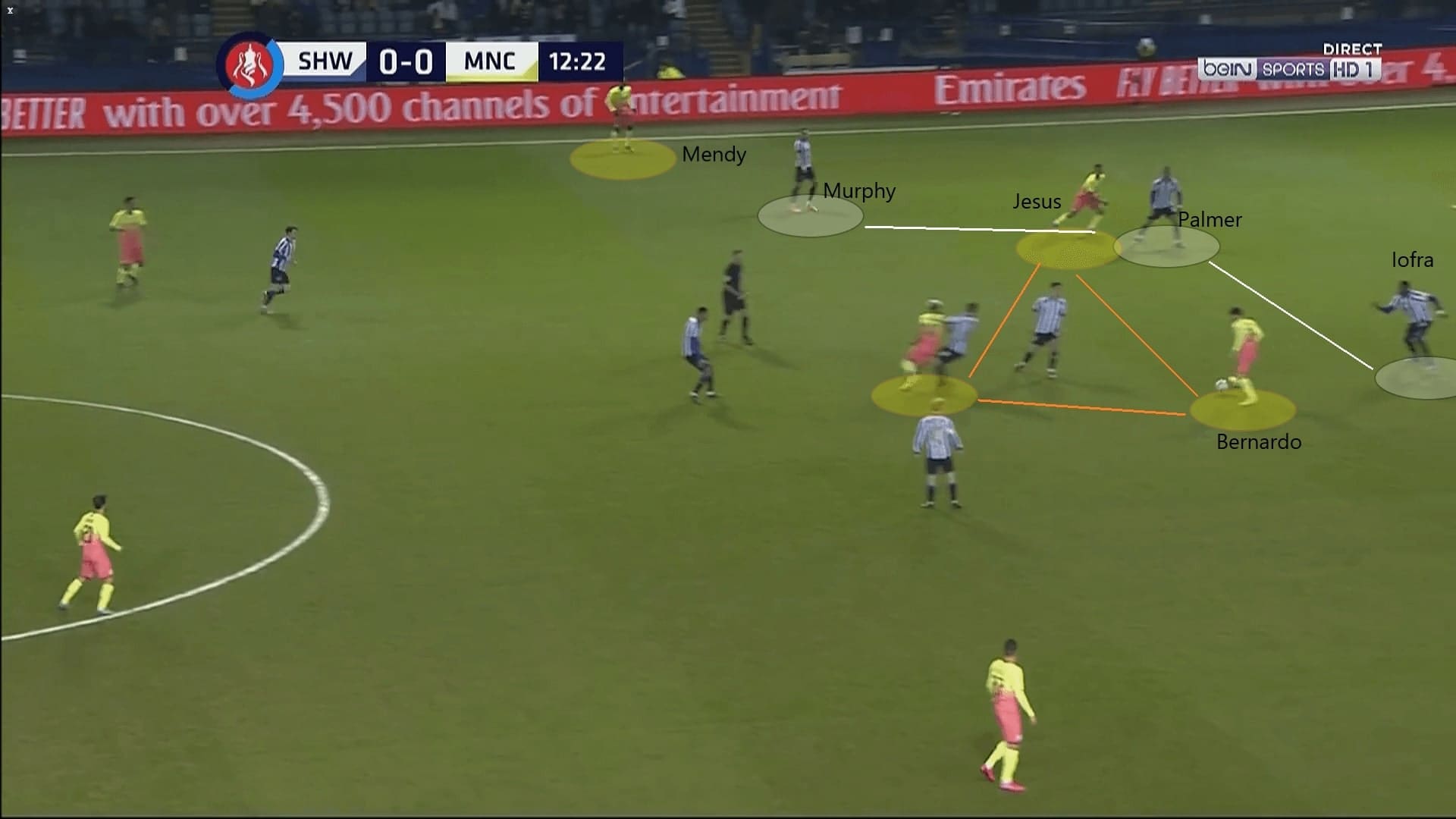
Another key individual we would like to point out was Mahrez. The Algerian made an impact today. He had six shots; six crosses; nine dribbles (67%); seven recoveries; seven touches in the box; 12 offensive duels (50%); three shot assists and five deep completions.
Below is the heat map of Mahrez. As explained in the previous section, the Algerian suffered from the suboptimal body orientations in the early stages. Soon, he no longer stayed at the wide areas, but he became a free player to roam his position. As you can see in this heat map, of course, he made an impact on the wide areas. Also, he was very active in zone 14, providing a constant threat to the defence.
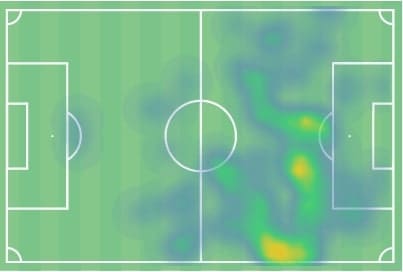
Defensive transitions & counter-press
Although the margin was one goal only, clearly City dominated the game, this was reflected in the statistics. City were the better team in many domains (possession: 78% – 22%; xG: 2.19 – 0.07; shots: 19–1; key passes: 14–0). In this section, we try to explain how City limited Wednesday’s ability to create chances.
Defensively, City were remarkable in the transition phases. They counter-pressed intensively to win the ball back. As reflected by the PPDA, Citizens’ average of the game was 6.3, and it reached 4.0 at the lowest point.
Below was an example. Guardiola’s counter-pressing scheme emphasized on shutting the passing lanes. As long as City loss the ball, they reacted and pressed instantaneously. D. Silva was the pressing player, his movement trapped the ball on the flank. The Spaniard also covered the player behind him during the press. For the forward option, Bannan, it was a pressing trap, as Cancelo was running at a high speed to approach the Scottish. The left wing-back, Fox, was also closed by Jesus. In this case, although City failed to win the ball high, they still forced a difficult out ball, hence, made the jobs for the centre-backs easier.
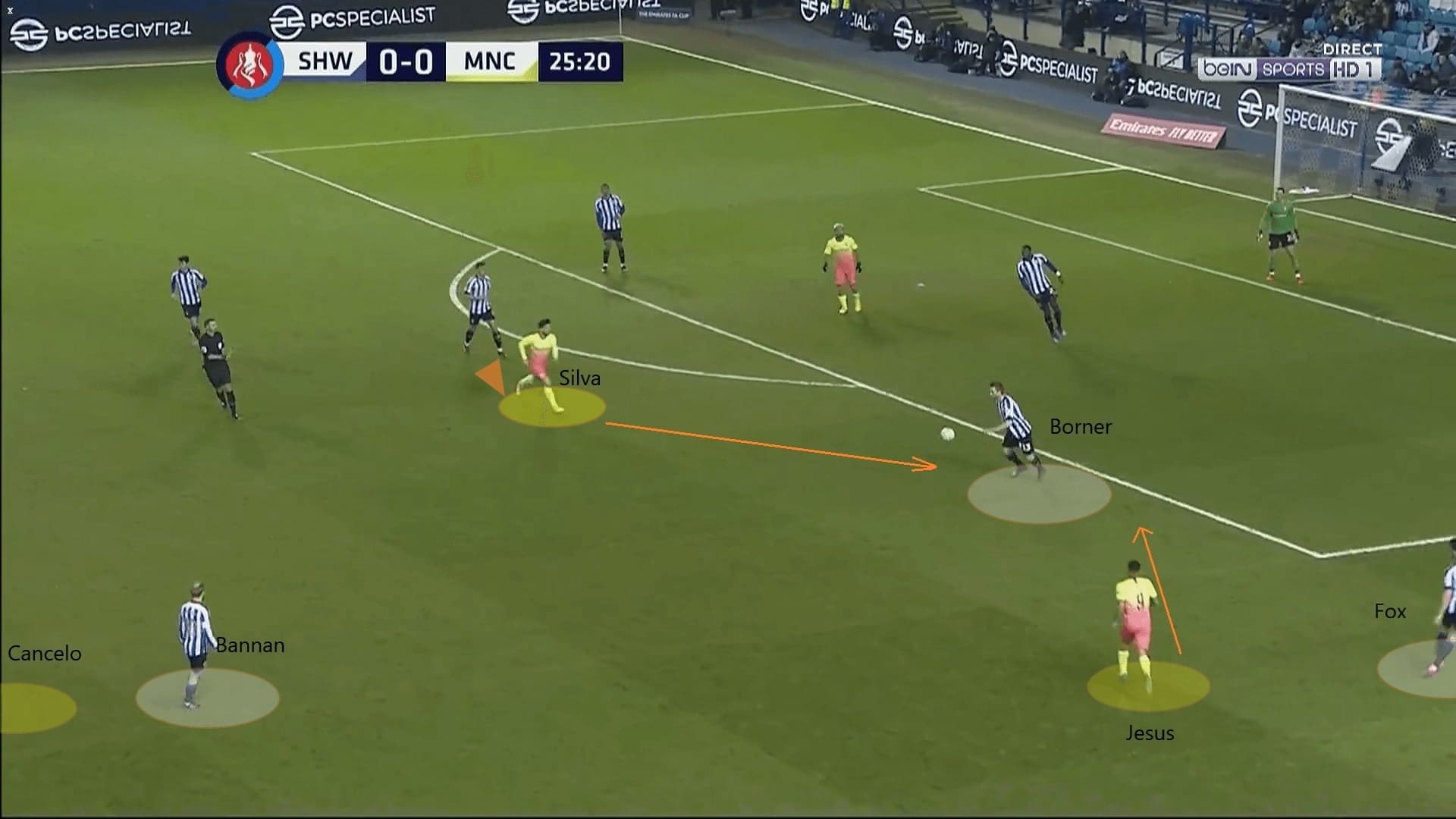
Usually, when we praised City’s defensive transitions, the performance of the sole pivot gets a notable mention. Again, Rodri’s performance should be credited. City’s record signing made a total of 11 recoveries in this game, and, nine of them occurred in the oppositions’ half. These were shown in the below recovery graph.
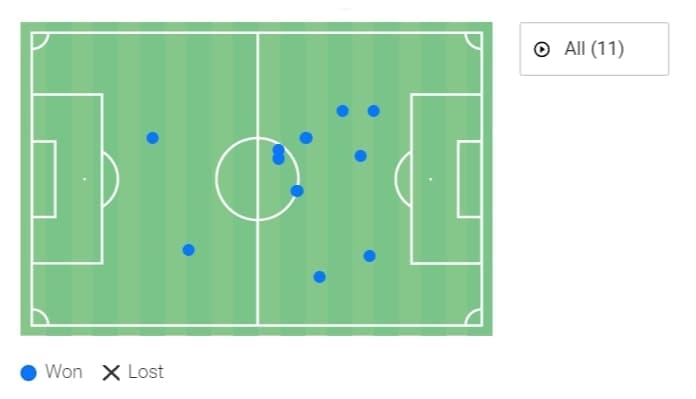
The last image is a game example. It was a case where Rodri successfully stopped the transition. In this case, Rodri was approaching Forestieri initially, but he did not use full speed so he could change his direction in case he had to. When the Italian carried the ball forward, Rodri simply used his physical superiority to win the ball back.
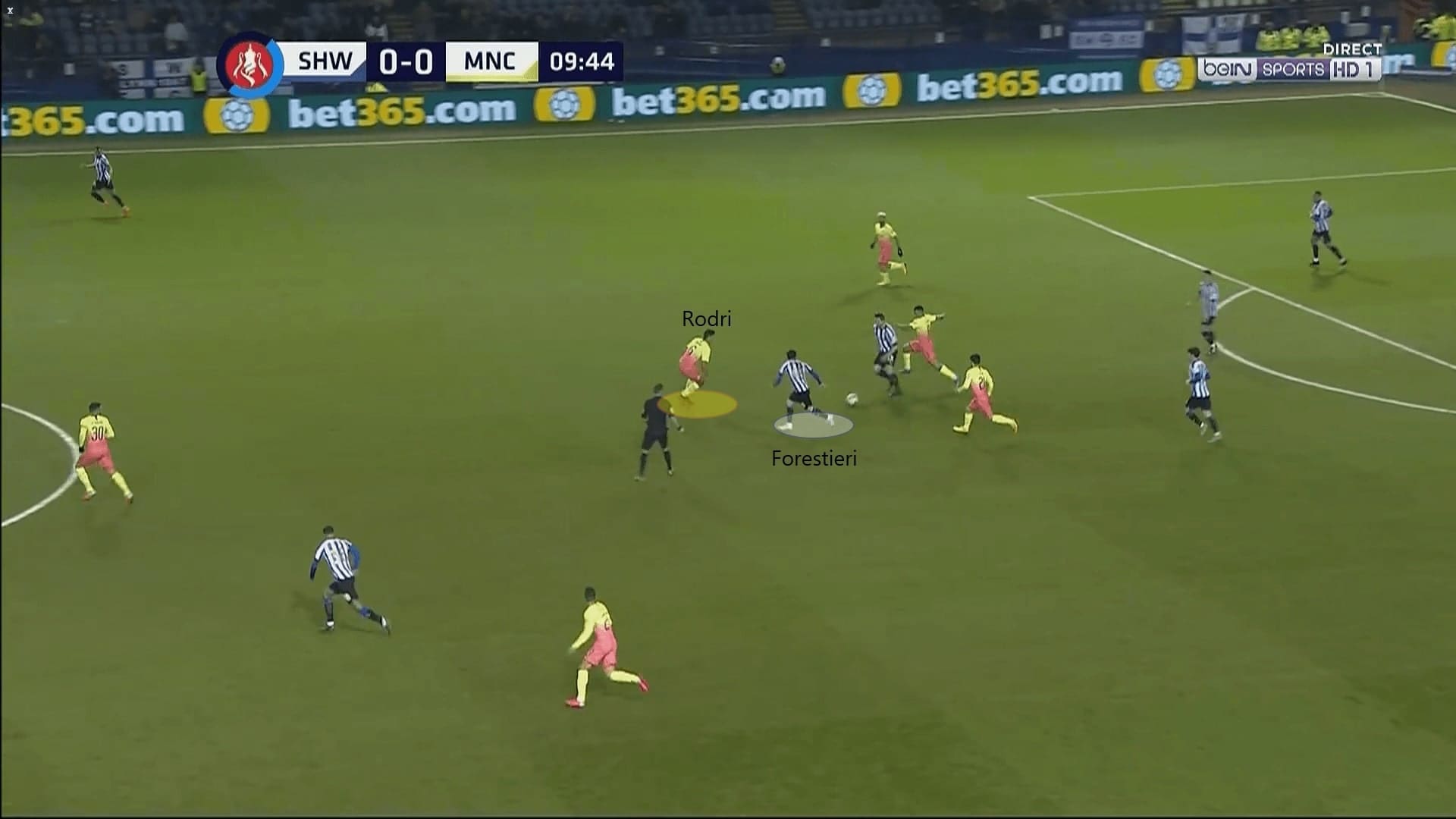
Conclusions
Four days after winning the Carabao Cup, City players continued to fight in the FA Cup. Their strong performance away from home helped them to enter the next round. Offensively, Guardiola’s adjustments to the team were vital to the win, they made it difficult for Wednesday to defend against. Defensively, City reacted well and restricted the number of meaningful chances created. It was a well-deserved victory for the Citizens, and they should keep raising the standard to continue their fight.





Comments